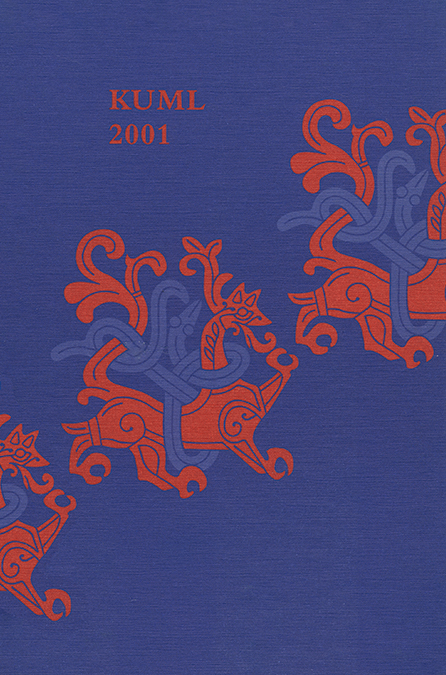Tingenes tavshed – tingenes tale
DOI:
https://doi.org/10.7146/kuml.v50i50.103117Nøgleord:
arkæologi, C.J. Thomsen, J.J.A. WorsaaeResumé
The silence of the artefacts?The traditional division between archaeology and history is created by the sources of the disciplines. Archaeology is normally defined by the material sources – the artefacts – and history by the focus on written sources. The article gives an introduction to the changing conception of artefacts and to the historians’ and archaeologists’ relation to the material sources.
In the 18th century,the collection and description of artefacts was the main goal for the scholars, or antiquarians (fig. 1). In the second half of the century it became common to use the ancient monuments and artefacts in art and in complex combinations as national monuments and landscape gardens (fig. 3-6). The function of the monuments was to emphasise the antiquity of the royal power and the king’s right and relationship to the nation. In the 19th century art became more romantic – as did the interpretations of the artefacts. Now the Danish people and the ”true Danish spirit” made the artefacts valuable (fig. 7).
Until the middle of the 19th century it was believed that the prehistoric artefacts were in fact ”historic” – that they belonged to the same period as the Old Norse writings. The artefacts were considered temporary with the writings of Saxo and the Icelandic manuscripts and the interpretation of the artefacts relied heavily on written sources. Also artefacts were often ascribed to supernatural beings such as giants and elves (fig. 2). From 1820 onwards, C.J. Thomsen developed an independent archaeological method according to which the artefacts were sources in their own right, and they were slowly accepted as the most reliable evidence of the distant past (fig 8-11). This development was partly caused by J.J.A. Worsaae’s critique of the traditional historical approach, which led to misinterpretations of mounds and artefacts.
This new interpretation of the material sources put archaeology and history in opposition to each other. The cultural history of the archaeologist written on basis of ”speech less” sources conflicted with the political history of the historians dealing with great men and central events. As a result of these conflicting definitions of history the disciplines separated.
This conflict is still evident in the disciplines’ attitude to each other. However, the postulated difference in the nature of written and material sources is untenable from the traditional viewpoint of a source as remnant or report (fig. 12).This definition of sources was created by Kristian Erslev in the late 19th century and can still be used when dealing with the apparent differences between archaeology and history. The article concludes that when archaeologists try to emphasise the truth of their sources, they are making a mistake. The fact that the artefacts are speechless, e.g. have no formulated report – does not make them true. The central question is the way the scientists interpret the sources, since no source ever speaks for itself.
Anne Katrine Gjerløff
The Department of History Copenhagen University
Downloads
Publiceret
2001-08-01
Citation/Eksport
Gjerløff, A. K. (2001). Tingenes tavshed – tingenes tale. Kuml, 50(50), 47–70. https://doi.org/10.7146/kuml.v50i50.103117
Nummer
Sektion
Artikler
Licens
Fra og med årgang 2022 er artikler udgivet i Kuml med en licens fra Creative Commons (CC BY-NC-SA 4.0).
Alle tidligere årgange af tidsskriftet er ikke udgivet med en licens fra Creative Commons.


